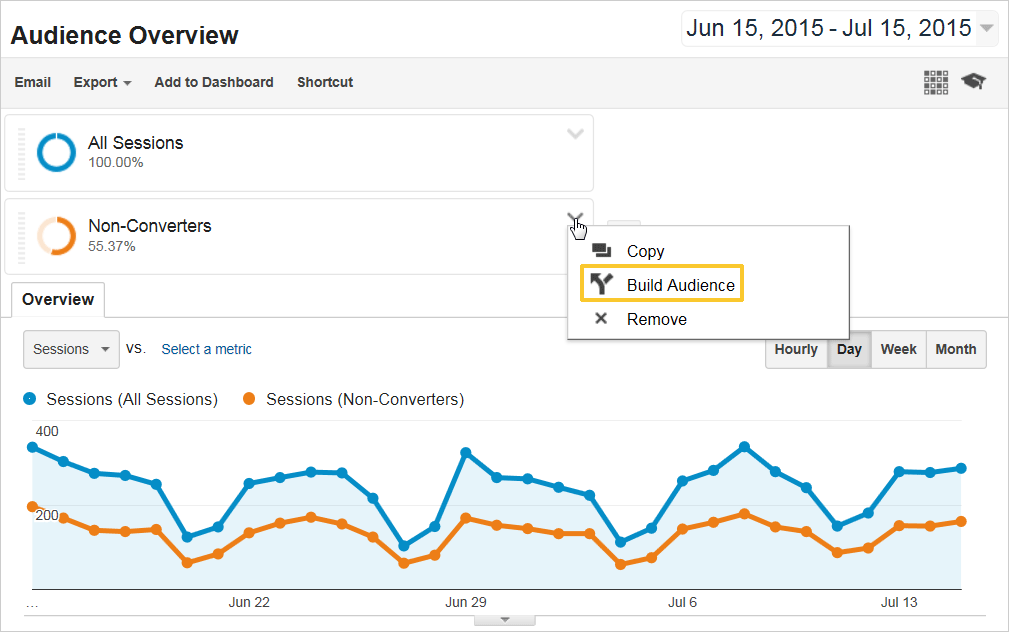A Full Guide to Remarketing In Google Analytics
A Full Guide to Remarketing In Google Analytics
Blog Article
Harnessing Remarketing in Google Analytics: A Comprehensive Guide
Harnessing remarketing in Google Analytics supplies services a tactical edge in getting to out to potential clients. The capability to target individuals who have already communicated with your site offers a special chance for customized marketing efforts. By recognizing just how to craft audience lists and deploy them effectively, businesses can substantially improve their conversion prices. The complexities of setting up and maximizing remarketing campaigns require a thorough understanding of target market division and performance analysis. This guide will shed light on the necessary actions entailed in using the full capacity of remarketing in Google Analytics, causing enhanced advertising and marketing outcomes.
Comprehending Remarketing in Google Analytics
Remarketing in Google Analytics allows companies to tactically target users who have formerly interacted with their web site or mobile app. By leveraging data from Google Analytics, companies can develop customized remarketing checklists based upon user habits, such as web pages visited, activities taken, or particular objectives accomplished. This powerful tool allows services to re-engage with individuals who have shown passion in their product and services, ultimately increasing the chance of conversion.
Understanding the different kinds of remarketing methods is crucial for a successful project - What Is “Remarketing” In Google Analytics?. Google Analytics uses different options, consisting of typical remarketing, dynamic remarketing, and remarketing checklists for search advertisements (RLSA) Each type offers a special function and can be customized to satisfy details advertising and marketing purposes
Additionally, examining the performance of remarketing projects is essential for enhancing results. Google Analytics supplies beneficial insights right into the performance of different remarketing techniques, permitting companies to make data-driven decisions and refine their targeting strategy. By constantly adjusting and keeping an eye on remarketing initiatives based on analytics information, services can optimize ROI and drive success in their advertising initiatives.
Establishing Remarketing Campaigns

After establishing up audience lists, the next action is to connect Google Analytics with Google Advertisements. By connecting these 2 systems, businesses can flawlessly move audience checklists from Google Analytics to Google Advertisements for remarketing objectives. This combination permits more specific targeting and much better campaign performance.
As soon as the accounts are connected, companies can develop remarketing projects in Google Ads making use of the audience notes formerly defined in Google Analytics. These projects can be tailored with particular advertisement creatives, messaging, and bidding approaches to efficiently re-engage with past visitors and drive conversions. By following these actions, companies can take advantage of the power of remarketing to improve their marketing initiatives and raise ROI.
Making Use Of Target Market Segmentation Techniques

Predefined segments in Google Analytics permit you to swiftly assess usual audience categories like new users, returning individuals, or individuals that finished a particular objective on your website. Custom sectors, on the other hand, allow you to develop one-of-a-kind sectors based upon particular requirements that are crucial to your business purposes. Dynamic remarketing listings automatically readjust based on customer habits, revealing tailored advertisements to individuals that have interacted with your site in certain methods.
Analyzing Remarketing Performance Metrics
Upon examining the efficiency of remarketing campaigns in Google Analytics, the analysis of crucial performance metrics offers valuable understandings right into audience involvement and conversion prices. By delving into metrics such as click-through rates (CTR), conversion prices, expense per procurement (CERTIFIED PUBLIC ACCOUNTANT), and return on advertisement spend (ROAS), marketers can gauge the success of their remarketing initiatives. you could check here Assessing these metrics enables marketing experts to enhance projects, fine-tune audience targeting, and allot budget plans successfully to improve total remarketing efficiency.
Enhancing Remarketing Strategies
When refining remarketing strategies in Google Analytics, focusing on audience division is extremely important for attaining project success. By separating your target market into specific sectors based on their actions, demographics, or rate look these up of interests, you can tailor your advertisements extra successfully per group. This targeted method enhances the possibility of involving users that have currently shown rate of interest in your products or solutions, resulting in higher conversion rates.
One more essential aspect of enhancing remarketing methods is continuously testing and refining your projects (What Is “Remarketing” In Google Analytics?). A/B screening various advertisement creatives, messaging, or offers can aid you determine what resonates ideal with your audience and drives one of the most conversions. By evaluating the efficiency of these examinations in Google Analytics, you can make data-driven choices to enhance your remarketing efforts better
Moreover, leveraging dynamic remarketing can considerably enhance your campaign results. This function permits you to show customized ads to customers based on their past communications with your internet site, showcasing solutions or products they have actually formerly watched. By providing tailored material to users based upon their interests and behaviors, vibrant remarketing can aid raise interaction and drive conversions.
Final Thought
Finally, harnessing remarketing in Google Analytics is a tactical approach to target customers who have previously engaged with a site. By developing tailored target market lists and using target market segmentation methods, companies can maximize remarketing advocate boosted conversion rates. Evaluating performance metrics and constantly optimizing methods are vital for maximizing the effectiveness of remarketing efforts.
Google Analytics uses different options, consisting of typical remarketing, vibrant remarketing, and remarketing checklists for search ads (RLSA)After setting up target market checklists, her comment is here the next action is to connect Google Analytics with Google Advertisements. By connecting these two systems, companies can perfectly move target market lists from Google Analytics to Google Ads for remarketing purposes.As soon as the accounts are linked, services can produce remarketing campaigns in Google Ads making use of the audience provides formerly specified in Google Analytics.When refining remarketing methods in Google Analytics, focusing on target market segmentation is critical for achieving project success.
Report this page